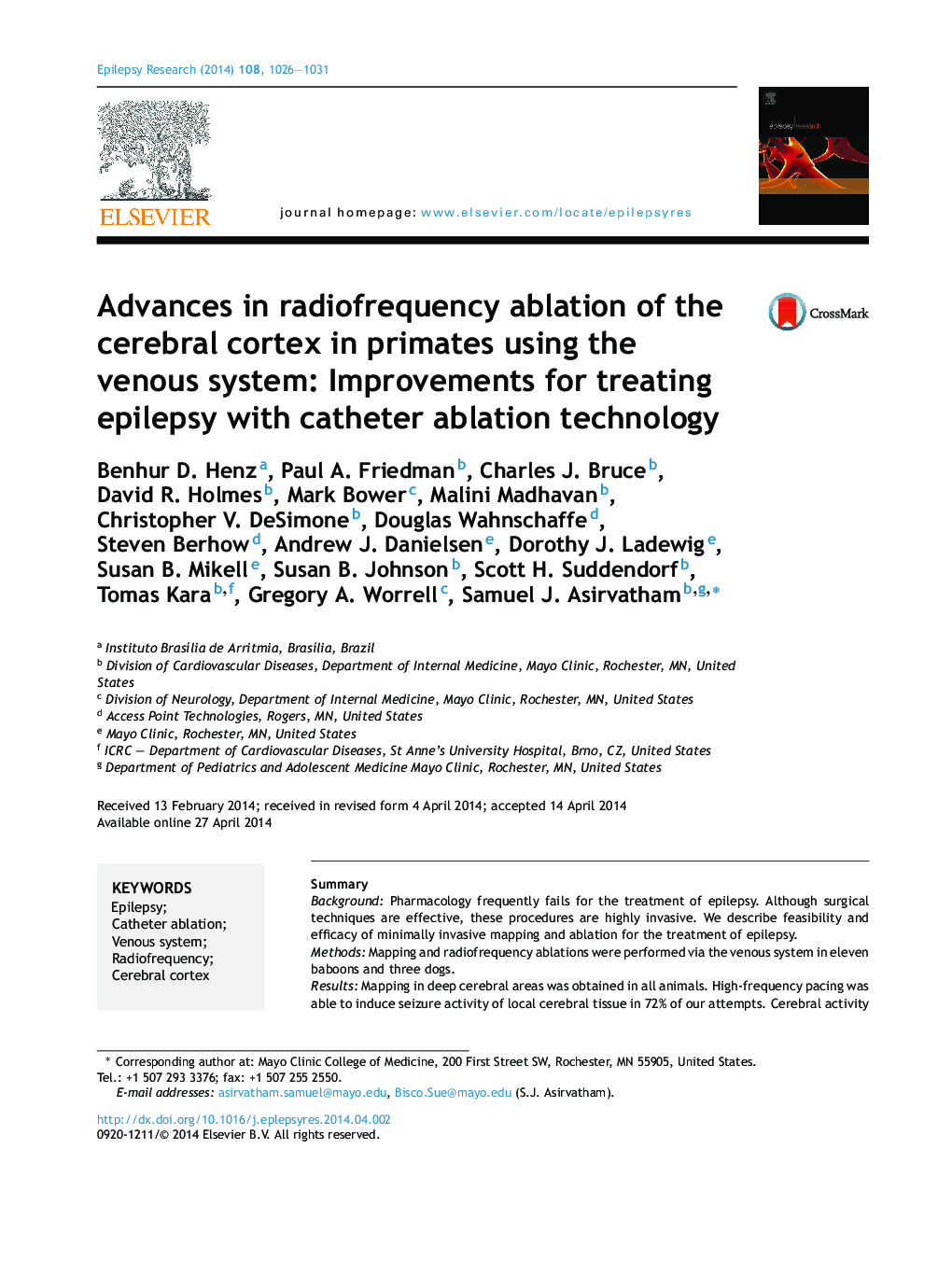| کد مقاله | کد نشریه | سال انتشار | مقاله انگلیسی | نسخه تمام متن |
|---|---|---|---|---|
| 3052057 | 1186076 | 2014 | 6 صفحه PDF | دانلود رایگان |
• Localization of epileptiform activity via venous mapping catheter.
• Catheter ablation of epileptiform activity via venous ablation catheter.
• RF ablation of cortical tissue through a transvenous or transcortical approach.
• Efficacy of catheter ablation for either superficial or deep tissue ablation.
• CNS ablation catheters with magnetic steerability to navigate tortuous vessels.
SummaryBackgroundPharmacology frequently fails for the treatment of epilepsy. Although surgical techniques are effective, these procedures are highly invasive. We describe feasibility and efficacy of minimally invasive mapping and ablation for the treatment of epilepsy.MethodsMapping and radiofrequency ablations were performed via the venous system in eleven baboons and three dogs.ResultsMapping in deep cerebral areas was obtained in all animals. High-frequency pacing was able to induce seizure activity of local cerebral tissue in 72% of our attempts. Cerebral activity could be seen during mapping. Ablative lesions were deployed at deep brain sites without steam pops or sudden impedance rise. Histologic analysis showed necrosis at the sites of ablation in all primates.ConclusionNavigation through the cerebral venous system to map seizure activity is feasible. Radiofrequency energy can be delivered transvenously or transcortically to successfully ablate cortical tissue in this animal model using this innovative approach.
Journal: Epilepsy Research - Volume 108, Issue 6, August 2014, Pages 1026–1031
